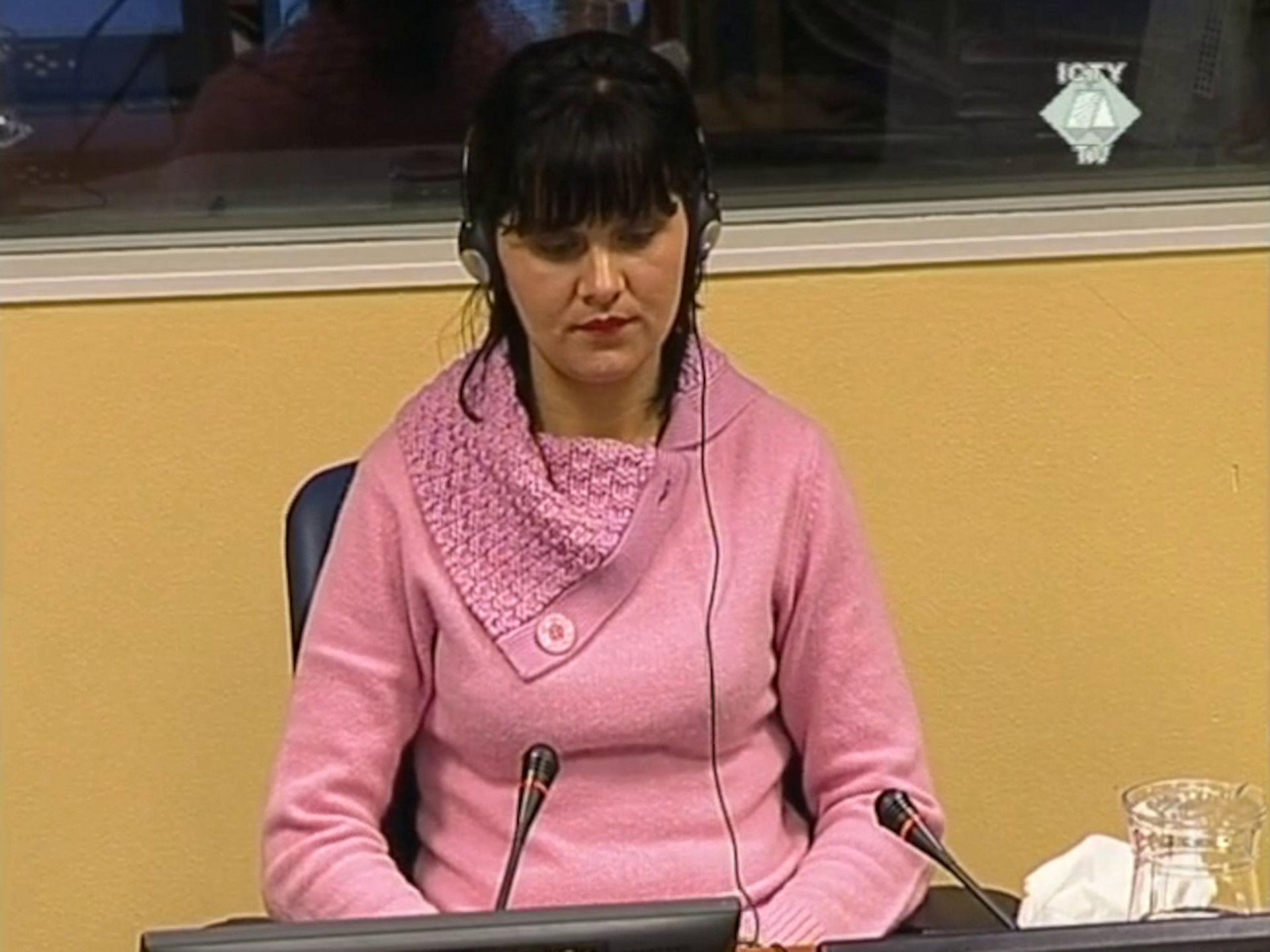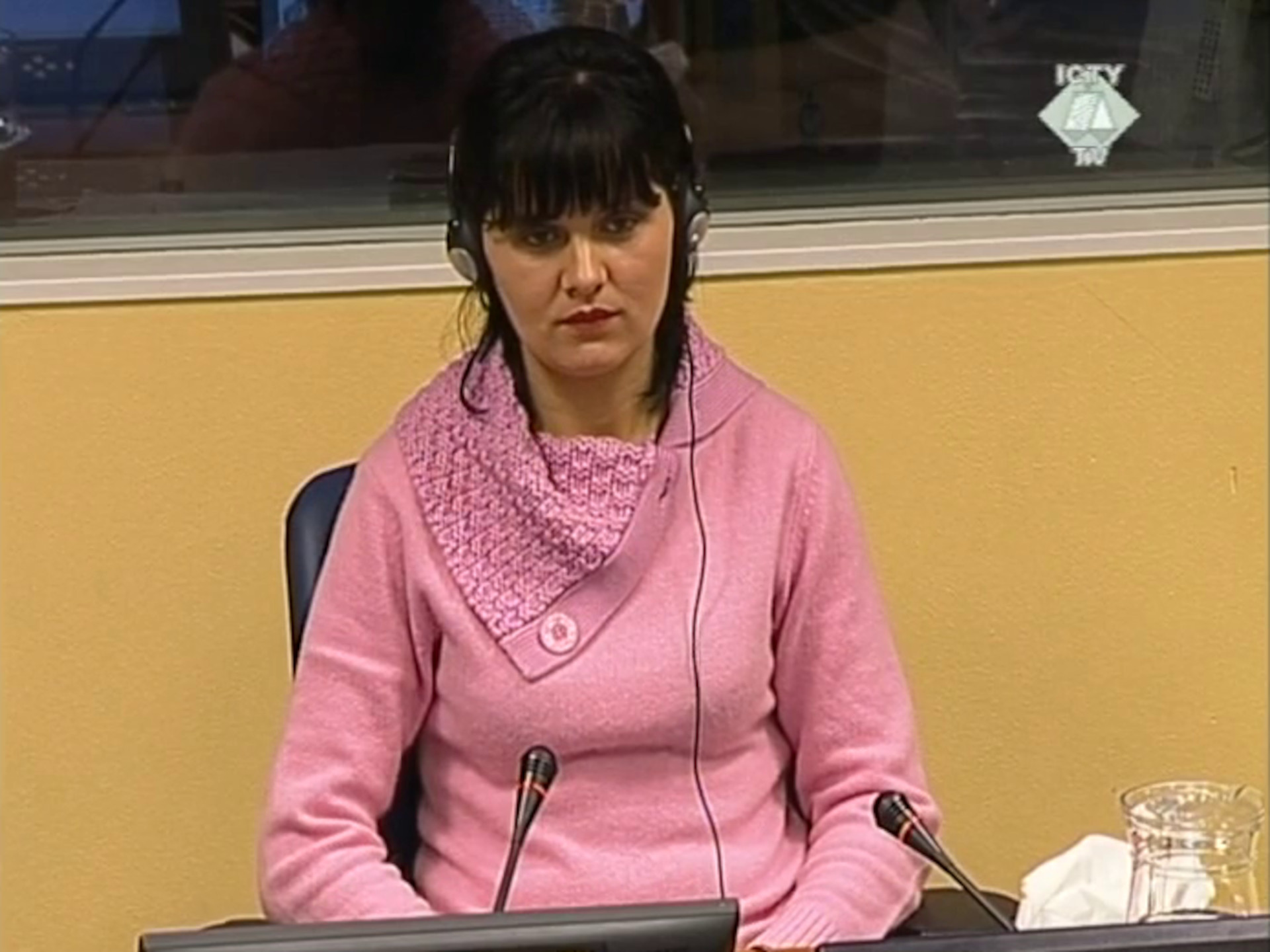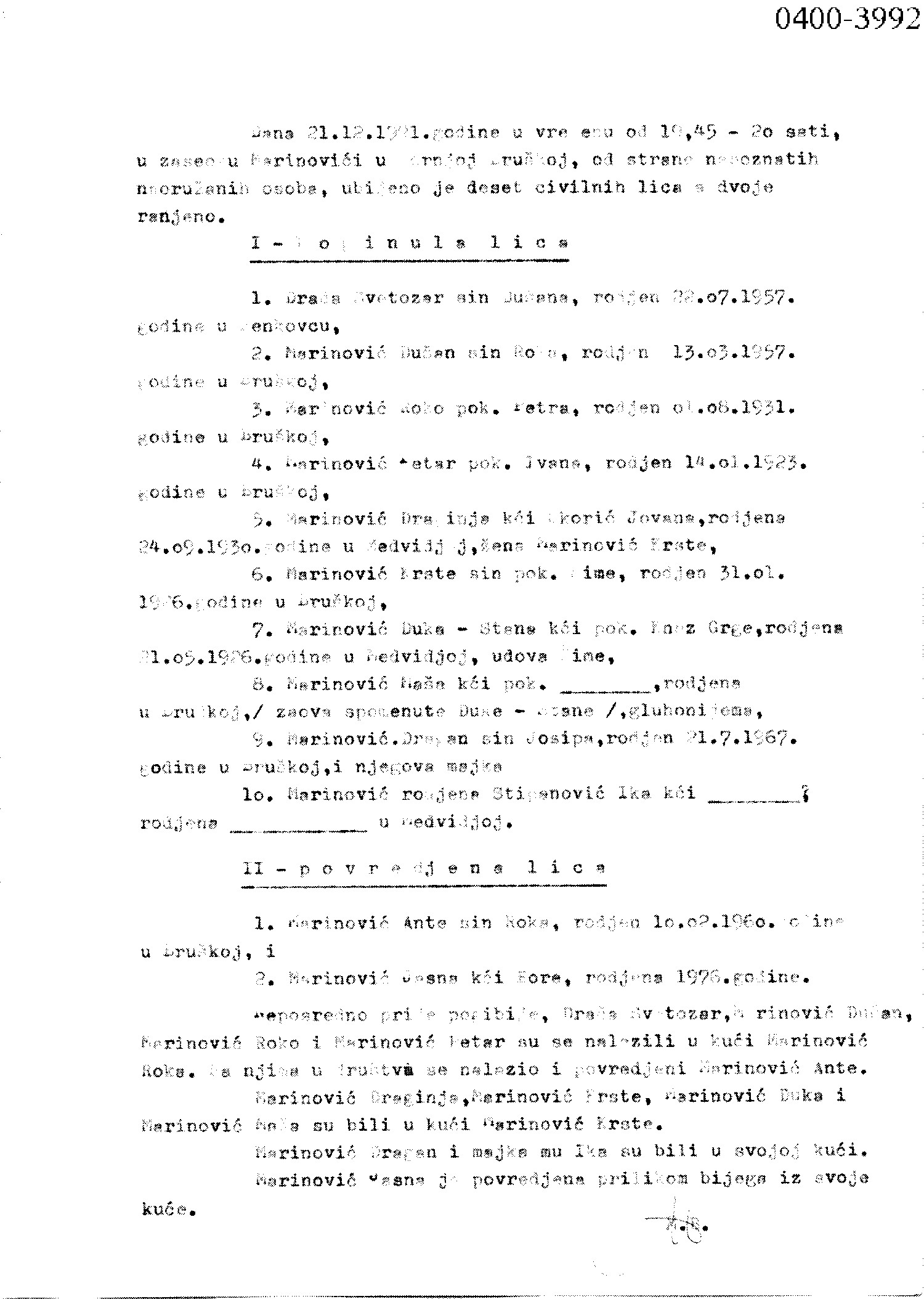Prior to Operation Storm:
The Little Girl from Bruška

The girl's name was Jasna. She was only fifteen years old when she was seriously wounded in Marinovići, a hamlet of the village of Bruška near Benkovac. Jasna was hit by two bursts of gunfire in the back while trying to flee from her attackers. The bullets lodged in her right arm and left hip.
Despite her injuries, she survived and later testified about the crime before the Hague Tribunal.
Jasna's neighbours, however, were not as fortunate. On the day that she was wounded, ten people were killed. They were executed by members of the special police.
Soon after the crime, Jasna and all other residents of Bruška, fearing for their safety, left their homes and fled the "Krajina" region. Their houses were then looted and destroyed.
This could have been a typical story of crimes committed against Serbs during Operation Storm. But it is not.
Jasna's last name today is Denona, her maiden name was Marinović, and she is Croatian. Of the ten people killed in Marinovići, nine were Croats, and one was a Serb who happened to be there by chance. The perpetrators were Serb special forces from the Krajina Militia, known as the "Martić's Police" ("Martićevci"). The crime occurred nearly four years before Operation Storm — on 21 December 1991.
Violence and killings like the one in Bruška were a daily reality for Croats living in "Krajina" while the area was under the control of the authorities of the "Serbian Autonomous Region of Krajina", later the "Republic of Serbian Krajina (RSK)". Between 1991 and 1995, brutal and systematic crimes were committed against the Croatian population of "Krajina", similar to those that, in the summer of 1995, would target the Serb population of the same region. Both campaigns of violence were carried out with the same objective: to ethnically cleanse the area. Thus, nearly all Croats were first expelled from the region, and then, during and after Operation Storm, so were all Serbs, apart from a small number who refused to leave and consequently became targets of the liberators.
The story of the hamlet of Marinovići has been included in this exhibition because the core intention of this and similar works is to oppose ethno-nationalist narratives that reduce the wars of the 1990s to "us" and "them."


